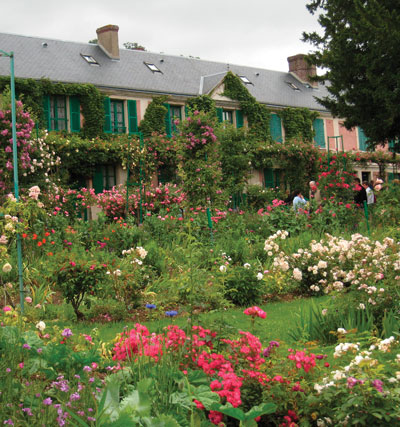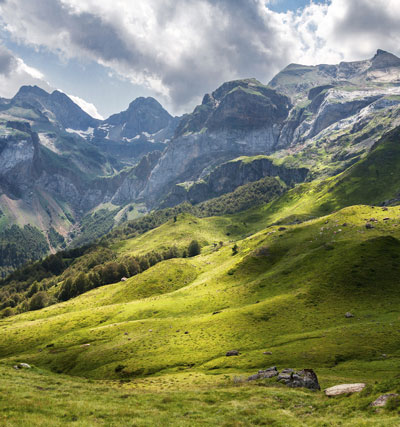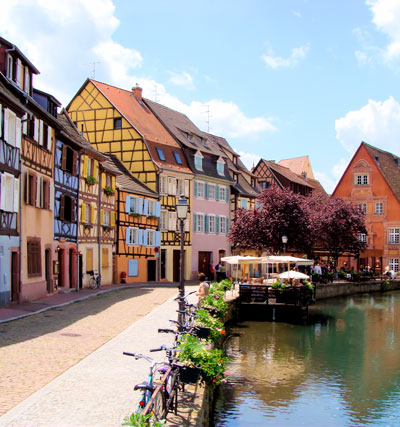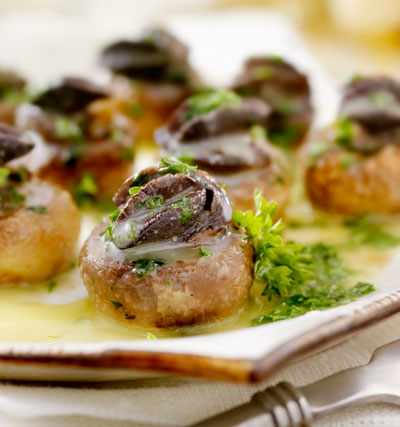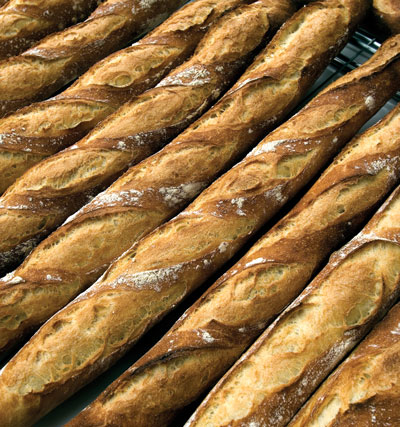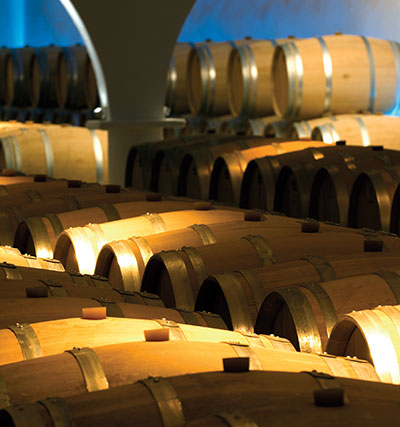France Travel Guide
When you think about France, what comes to mind? Grand villas lining the French Riviera or Bordeaux’s rolling vineyards? The historic beaches of Normandy, quaint mountain villages at the base of the French Alps or Notre-Dame de Paris overlooking the Seine River? France’s diverse geography makes the country the complete package.
France Travel Tips
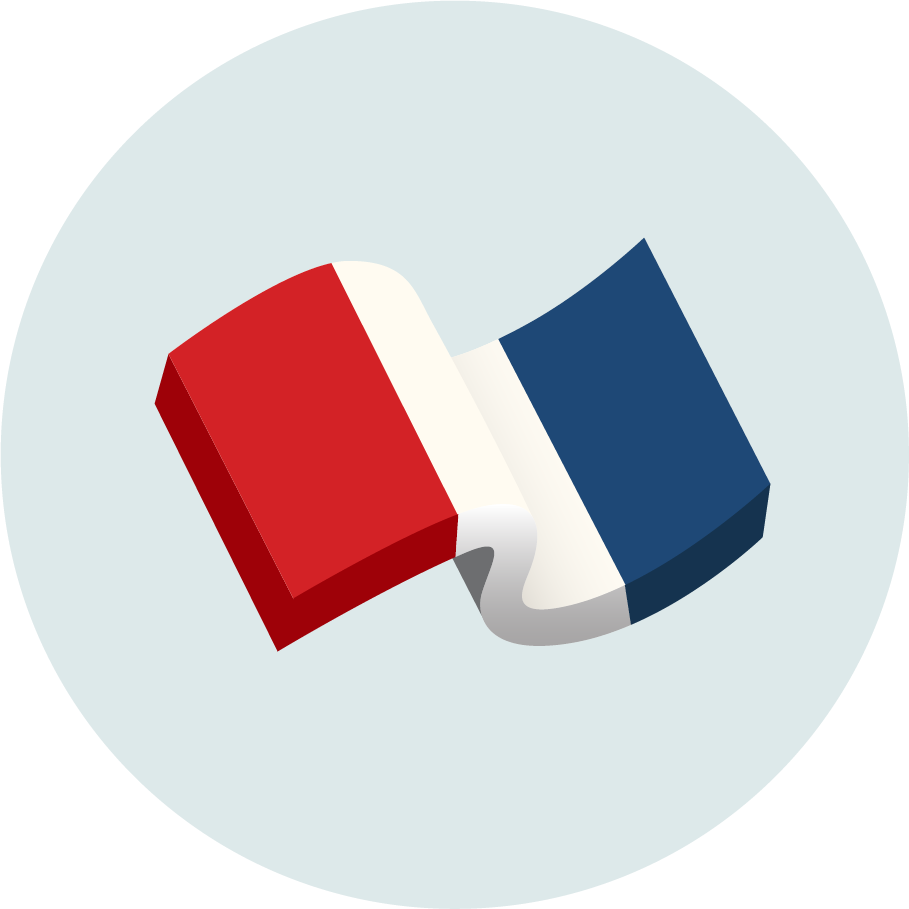
Go Beyond Paris
There is a lot to see and do in Paris; so much so that it may be overwhelming and seem like there is never enough time to see and do it all. But beyond the boulevard périphérique, there is a whole country waiting to be explored. Walk in the hallways of the Popes at the Palais des Papes in Avignon or bask in the legacy of the Romans at the Arles Amphitheater. Become an architecture critic and find your favorite Notre-Dame in Strasbourg or Metz, Nantes or Orléans, Bordeaux or Lyon. Catch your breath on the beaches of Normandy and the French Riviera or hike to the glaciers hidden within the French Alps. And how could we forget: Sampling local delicacies — wine and food alike — in Lyon, St. Malo, Burgundy or Champagne.

The French Siesta
Schedules in France operate a little differently than most other countries, with a midday break to enjoy lunch. Many shops and museums open in the morning and close during lunch hours so employees enjoy a brief reprieve from work and take time to eat. Most restaurants open for lunch around noon and close at 2 pm, so finding a restaurant open for a late lunch may be a challenge. In Southern France, the down hours are pushed back to coincide with the hottest time of the day. French law requires that shops close on Sunday, with the exception of those that sell food. Some shops find loopholes in the law and stay open all day, but it is easiest to stock up during the week or on Saturday and enjoy a leisurely day on Sunday.

Food Rules
As expected for a place where food is a focal point of their culture, there are certain tips and tricks everyone should know when dining out in France. Their food is internationally renowned and it should be savored, so the French prefer to sit and dine as opposed to ordering food to go. When deciding what to wear, always choose to dress your outfit up and once you’ve sat down, place your napkin on your lap. The French love their bread, and for good reason, but bread is broken and never cut. When eating cheese, be sure to leave the point intact. Last but not least, the French love a good coffee but rarely drink it after breakfast. If you’d like coffee with lunch or dinner, it is typically ordered after dessert and you can expect a shot of espresso as opposed to the cup of coffee typical in the United States.

Dress for the Moment
We know what you may be thinking: “France is one fashionable place,” and we couldn’t agree more. Clothing matters and dressing too casually can make you stick out and possibly feel uncomfortable. The French take their fashion seriously with makeup and accessories riding in the passenger seat. For women in France, and Paris in particular, natural hair and skin is considered the most attractive, with makeup being complimentary. They love simple, darker colors such as black, grey and navy and always dress like there is someone to impress. Unless exercising, men rarely wear shorts or athletic clothing, especially when dining out.

Parlez-vous Francais?
The French are proud of their history and culture, but even more so, of their language. Even though many people may speak English — especially in larger cities — it doesn’t mean they will forgo their native tongue. Greeting with a simple “Bonjour” can change the entirety of your interaction with a local. Learning some simple French phrases to use in conversation can go a long way and you may find that attitudes can shift when you at least try to speak their language. In addition to brushing up before traveling, there are a number of handy apps that are free to download on your phone that can help translate back and forth between English and dozens of other languages, including Google Translate for both Apple and Android devices.
Getting Around France
With some of the best public and private transportation infrastructure in the world, getting around France has never been easier. Paris’ Charles de Gaulle (CDG) is one of the busiest airports in the world and is a major layover destination for Europe-bound flights from the United States. Once in France, thousands of miles of rail lines — both high speed and local trains — efficiently crisscross the entire country. For a more relaxed pace, cruises navigate France’s storied coasts, rivers and canals, leaving no part of the country out of reach.
By Air
Despite France’s large size — roughly the same area as the state of Texas — it is an easy country to navigate. Paris’ main airport, Charles de Gaulle (CDG), is the busiest airport in mainland Europe and the country’s major point of entry. Air France is the French flag carrier with hubs in Charles de Gaulle and Paris’ secondary hub airport Paris Orly (ORY). Flights are also readily available to major cities in neighboring countries including London, Brussels, Frankfurt and Geneva. From London, the Eurostar train offers an affordable, high-speed option connecting London to Paris is just over two hours. Once within Europe, numerous intercontinental and domestic flights are available to connect the rest of the country through flights to Lyon, Toulouse, Bordeaux, Nantes and more.
By Train
France’s extensive rail network easily weaves these cities together with the second-largest rail network in Europe. Paris’ largest rail station, Gare du Nord, is the country’s main station that connects Paris to Northern France, Belgium, the Netherlands, Germany and the United Kingdom. Additionally, Paris is home to six other train stations — each station is the launching point for trains departing for a certain region of the country. The four main directional stations are Gare du Nord to London and northern France; Gare Saint-Lazare to Normandy; Gare du Lyon to the Alps, the French Riviera, Barcelona and Lyon; Gare de Austerlitz to the Loire Valley, Toulouse and central France. These four stations connect the local Paris Métro, the suburban rapid transit RER (Réseau Express Régional) lines and the high-speed TGV lines.
France’s national rail network is operated by the state-owned SNCF (Société Nationale des Chemins de fer Français) and offers a number of flexible transportation options for travelers interested in both time-efficient and affordable journeys. The high-speed TGV (Trains a Grande Vitesse) is the most efficient mode of transportation when navigating the French countryside, traveling from Paris to Marseille in just under three and a half hours — a distance of nearly 500 miles (800 kilometers). Traveling at maximum speeds of up to 199mph (320km/h), the TGV connects the major cities in France to Paris and most of its neighboring countries — Belgium, Luxembourg, Germany, Switzerland, Italy and Spain. France’s regional railway — the TER (Transport Express Regional) — is the most affordable mode of transportation connecting 20 regions across the country. Travel via the TER is best for nearby cities and towns and allows you to fully enjoy the French countryside without breaking the wallet.
When looking to buy tickets for a leisurely train ride through the French countryside, they can be purchased via phone app, online or at the train station through automated machines or the teller window. Be sure to specify whether you are interested in the TGV or the TER trains and select a first- or second-class ticket. Most trains require a seat reservation at an additional cost, especially high-speed trains like the TGV and Eurostar, international trains and overnight trains. You don’t need a seat reservation for regional trains, but planning ahead and doing so makes sure that you’ll have a spot aboard. Each train has a limited number of reserved seats and they can sell out quickly during peak times and holidays. Most trains throughout Europe can be reserved up to three months ahead of time, so if you have a set destination, it is always better to book further ahead of time.
By Ship
With more than 2,000 miles of coastline and navigable rivers connecting the entire country, experiencing France by ocean cruise, riverboat or barge is a one-of-a-kind experience. At the western end of the French Riviera (Côte d'Azur), Marseille is France’s second-largest city and one of the oldest ports in Western Europe. Marseille is a common departure and port of call for Mediterranean cruises and connects southern France to North Africa, Sardinia and the western coast of Italy. At the foot of the Alps and the eastern edge of the French Riviera, Nice is a hub for Mediterranean cruises sailing to the neighboring Principality of Monaco and ferries sailing to the French island of Corsica, located 110 miles off France’s southeast coast.
Ocean and Small Ship
Along the coasts of the Atlantic Ocean to the east and the English Channel to the north, port cities and fishing villages welcome ocean liners and small ship cruises. Larger cities such as Nantes and Bordeaux are cruise gateways to the world-famous Loire Valley and Bordeaux wine region. European cruises navigating the Iberian Peninsula — sailing to and from renowned cities including Rome, Barcelona and London — offer spectacular introductions to coastal France.
River
Each of France’s three major rivers — the Seine, the Loire and the Rhone — have their own personalities and transport visitors through the country’s distinctive regions aboard immersive river cruises. Seine River cruises sail out of Paris and connect the metropolis to the Impressionist villages of Giverny and Rouen and the D-day Beaches lining the English Channel. France’s longest river, the Loire, begins in the French Alps and turns west at the City of Orléans towards the Atlantic Ocean; Loire River cruises are famous for the hundreds of imposing châteaux and monuments reminiscent of the Renaissance and Age of Enlightenment. Flowing from the Rhône Glacier in Switzerland to the sun-kissed shores of the Mediterranean, the Rhône River passes through France’s culinary capital Lyon and the Palais des Papes at Avignon. Rhône River cruises navigate through cities protecting ancient Roman ruins and the premier Rhône wine region.
Barge
France's main rivers are connected by nearly 1,500 miles of canals, built mainly throughout the 18th and 19th centuries. Canals are especially common in northeastern France in the regions of Burgundy, Alsace and Lorraine. Many historic barges have been repurposed and renovated to share the beauty of the French canal towns at a relaxed and leisurely pace. French barge cruises transport passengers into towns fresh out of a Disney fairytale and many have onboard bicycles that allow you to cycle between destinations during the daytime sailing.
France Tours for Seniors & Families
See AllTop Attractions

Casting a watchful gaze over the City of Light, the Eiffel Tower is an ambassador to France and welcomes visitors from far and wide to Paris. Constructed in the late 1880s for the 1889 World’s Fair, the wrought- iron lattice tower was initially rejected by French artists and architects — it was deemed unworthy of representing the intrinsic nature of engineering and architecture within France. Today, the iconic monument is one of the most widely known pieces of structural art.
The observation decks offer unobstructed views of Paris from the 7th arrondissement along the Seine River, two miles west of Notre Dame and the Île de la Cité. The first observation deck stands 187 feet above the ground and is home to an immersion gallery, the restaurant 58 Tour Eiffel and a glass, see-through floor. The first observation deck is only accessible via a 300-plus staircase and is often overlooked by visitors who head directly for the elevator. From the 377-foot-high second floor, you can see all of Paris’ monuments and feast on gourmet cuisine at the Jules Verne. The elevators from the esplanade ride directly to the second floor, or the more adventurous can climb the 704 stairs. Last, but most certainly not least, the 906-foot-high third floor is the highest observation deck in the European Union and leaves Paris beneath your feet. The two-story observation deck — one indoor and one outdoor — offers unforgettable views that can be enjoyed with a glass of champagne from the sky-high champagne bar.

The shining example of regal splendor, the Palace of Versailles is the architectural embodiment of Louis XIV’s famous exclamation, “I am the state!” Originally a two-story hunting chalet in a bourgeois Paris suburb, Louis XIV upended the French monarchic system and moved the government and court into its increasingly expansive hallways and courtyards. Versailles’ growth, from a chalet to the palace we know today, is a visual lesson in French architecture through the 17th and early 18th centuries and recalls an era during which France was the leading European power. UNESCO inscribed the Palace and Park of Versailles into the list of World Heritage Sites in 1979, noting that generations of artists, architects, landscape architects, gardeners and more have provided Europe with an image for the quintessential royal residence.
Today, the palace contains 2,300 rooms, including the opulent Hall of Mirrors, King’s State Apartments and Gallery of Great Battles. The opulent Hall of Mirrors — designed to overlook and reflect the elaborate gardens to the chateau's west — is among the most well-known rooms in the château. While the Hall of Mirrors was exclusively reserved for Louis XIV, the seven rooms of the King’s State Apartments are adorned with all of the monarch’s admiration of Italian Renaissance and Baroque stylings for hosting official events. The longest room in the palace, the Gallery of Great Battles boasts French artistic masterfulness and has remained unchanged since the hall's completion in 1845.
The estate grounds are as much of a destination as the chambers and hallways within. Designed to illustrate the king’s dominion over nature, the French formal gardens occupy a majority of Versailles’ 800 hectares and follow the sun’s daily journey across the sky from East to West. The gardens were designed under the Sun King’s direct orders and were designed with canals, fountains and hydraulics that remain to this day. The Park of Versailles, segmented by the cross-shaped Grand Canal, is home to Marie Antoinette's estate and Louis XIV’s Grand Trianon. If Versailles was built with all the elaborate grandeur meant for a god, the Grand Trianon is home to the marble intricacies meant for man.

Sitting in the shallow bay fed by the Couesnon River, the abbey of Mont Saint-Michel rises towards the sky from between the tides. The water level of the silty bay ebbs and flows with the tides, creating a natural mirror that fog rolls off of and envelops all but the highest reaches of the island. Monks first came to the rocky, secluded island in the late-seventh century in search of solitude and began to build a church atop the island after having a vision of Archangel Michael. The massive undertaking was supported by local dukes and the French kings as crypts were built to support the church above since the island’s peak was too narrow to support a cloister of such magnitude. Ramparts and fortifications were added to the bay’s natural barrier to protect the center of learning from hostile adversaries. The surrounding waters and mudflats pin Mont Saint-Michel against the horizon and provide a changing landscape that captures the imagination of all who visit. Often seen in popular culture, Mont Saint-Michel was the inspiration for several Disney movies, including the castle in The Little Mermaid.
Adhering to the forces of nature, Mont Saint-Michel is accessible via an elevated causeway that allows the Couesnon River to flow freely into the bay and preserve the island’s maritime character. Crossing the bridge provides one of the most enchanting views of the abbey and visitors are welcomed by daunting ramparts and stone steps that wrap around the rocky isle. The town below — home to 50 residents — has remained unchanged through the centuries and is connected to the church and cloister above by narrow pathways and garden terraces. The highlights of Mont Saint-Michel are the monastic structures capping the island. The Church of Saint Michel is an awe-inspiring example of Romanesque architecture dating to the 11th century, with Gothic features added through the centuries as the abbey grew in size and wealth.

Utah. Omaha. Gold. Juno. Sword. These five beaches will forever go down as some of the most consequential beaches in the world. On December 6, 1944, the largest seaborne invasion in history took place as 156,000 American, British and Canadian troops landed on the five beaches in Normandy. Initially delayed due to inclement weather, a lull in the storm provided the perfect opening for the Allied forces to land at the fortified beaches; the Americans landed in the west at Omaha and Utah, the Canadians landed in the center at Juno, the British landed to the east at Sword and Gold. The cliffs at Omaha Beach presented the greatest obstacle for the American forces and logistical errors failed to cripple the German forces protecting the broad beach. Fighting here proved to be the most devastating as the Americans had to overcome the sloping beaches and heavily fortified Pointe du Hoc.
The D-Day landings have been immortalized in history as stretches of the battered Normandy coastline remain as they stood in 1944 with artillery craters dotting the shore. Memorials are erected to those who stormed the beaches. From atop the coastal cliffs, one can see where the original German fortifications stand in memoriam of the challenges and difficulties faced by the landing troops. At Omaha Beach, German fortifications are scattered across the clifftop at the Pointe du Hoc and a museum outlines the decisive campaign. The troops who lost their lives lay in rest at the Normandy American Cemetery, Memorial and Visitor Centre, overlooking Omaha Beach. The Cemetery, Walls of the Missing, Museum and Memorial preserve the story of those who made the ultimate sacrifice. There are individual crosses for the 9,387 American soldiers who lost their lives in the Normandy Campaign. Omaha Beach remains the most well-known of the five beaches, in part due to the opening scene of Saving Private Ryan. Utah Beach, the second beach where American troops landed, is known for the paratrooper whose parachute got stuck on the church's steeple in Sainte-Mère-Eglise. The museums at Utah Beach are dedicated to planning behind D-Day and the American paratroopers who helped capture the westernmost of the beaches.

If castles inspire you, there is no better destination in the world than the valley of the Loire River and its tributaries. The 200-mile-long UNESCO World Heritage Site along the Loire Valley is home to more than 300 châteaux. Gazing upon the elaborate towers, turrets, gables, chimneys and walls built of yellow-hued tuffeau stone is like walking into a fairytale. When the French kings began constructing fortified castles along the Loire — France’s longest river — in the 10th century, noble families quickly followed suit. Centuries of conflict and showmanship led these early castles to evolve into the elaborate châteaux that we see today. The royal châteaux were home to some of Medieval France’s pivotal moments; marriages, assassinations, international treaties, and political and religious sanctuary all took place within their ornate halls. The Château de Loches was home to Richard the Lionheart in the 12th century and Joan of Arc met with King Charles VII at Château de Chinon in 1429. The Loire Valley enjoyed a golden age from the late 1400s to the mid-1500s when the wars subsided and the kings preferred to spend their time along the river’s banks. Even when the royal court returned back to Paris and ultimately Versailles, countless dukes and nobles stayed in the Loire and continue to build and renovate their châteaux and summer homes.
One of the finest examples of the French Renaissance, the châteaux of the Loire Valley inspired everyone from Leonardo da Vinci to Walt Disney. King François I is considered the most important monarch for the valley’s development, building and renovating châteaux across the region. He built Château de Chambord — the largest in the Loire — as his hunting residence and brought artists to France, including Leonardo da Vinci. Its distinctive French Renaissance architecture is the centerpiece of a massive estate with finely manicured gardens and decorative towers, walls and a moat. One of the Loire’s most famous châteaux is Chenonceau, spanning the River Cher. The castle was home to many powerful women, including Catherine de Medici, who is responsible for the famous wing seen today. In the east is the town of Saumur and one of the country’s oldest châteaux. The Château de Saumur is situated high on a hill overlooking the Loire River and town for which it was named and is believed to have been one of the castles that inspired Walt Disney for his Sleeping Beauty castle.
“We had some really unique experiences on this adventure, such as visiting a truffle farm and being awed by prehistoric cave art. Especially enjoyed visiting so many beautiful small villages and reacquainting ourselves with the French appreciation for the good things in life.”
— Lucinda from Lutz, Fla. —
Popular French Regions to Explore
“Anyone with an interest in WW I would benefit from this program. It had a wonderful combination of in-depth field trips to the battle fields and war memorials as well as less somber tours of the champagne area. The barge was sublime in all ways: the crew, the food, the routes and the ease of movement.”
— Beatrice from Peacham, Vt. —
French Food & Wine
If there is one aspect of French culture that resonates around the world, it is French cuisine.
French gastronomy holds such an undeniable influence on world cuisine and traditions, it was inscribed on UNESCO’s (United Nations Educational, Scientific and Cultural Organization) list of Intangible Cultural Heritage of Humanity in 2010. Much more than enjoying a quality meal, UNESCO describes French gastronomy as a “a customary social practice for celebrating important moments in the lives of individuals and groups … The gastronomic meal emphasizes togetherness, the pleasure of taste, and the balance between human beings and the products of nature … Individuals called gastronomes, who possess deep knowledge of the tradition and preserve its memory, watch over the living practice of the rites, thus contributing to their oral and/or written transmission, in particular to younger generations. The gastronomic meal draws circles of family and friends closer together and, more generally, strengthens social ties.”
Enjoying a French meal is about enjoying a story of harmony.
Main ingredients, spices and sauces all complement each other through simple, yet effective cooking techniques. Local products are the cream of the crop and shape the flavors produced through the seasons. Lyon, France’s gastronomic capital, is the living embodiment of local terroir and has been shaping French cuisine for the past 80 years. The confluence of rivers Rhône and Saône, fertile fields of Provence and the French Riviera and the vibrant vineyards of the Rhône valley and Beaujolais each contribute to Lyon’s unrivaled culinary scene. Local chefs are unafraid to challenge the palate and use unusual ingredients including beef snout and pig’s ears.
FRENCH WINE
Regarded by many as the best in the world, conquering the world of French wine can seem like a daunting task.
France is the world’s second-largest wine-producing country with more than 1.4 million acres of vineyards spread across the country’s seven largest regions. Within France’s borders, much of the country is split between isolated massifs and rolling plains. Beyond the golden beaches of the French Riviera, the Rhône River separates the French Alps from the mountainous plateau that covers south-central France. The Rhône River is dotted with ancient settlements that have grown into modern cities and the renowned Côtes du Rhône wine region lines the hilly riverbanks. These highlands to the Rhône’s west covers approximately one-sixth of France and feeds the Loire River and smaller waterways that flow across France’s lowlands. The Loire is the longest river in France, flowing north until the city of Orléans and turning west towards its outlet at the Bay of Biscay. Along the Bay of Biscay, western France ranges from French Basque country along the Pyrenees Mountains to the rolling hills of Brittany. This region is largely flat and is best known for the famed vineyards of Bordeaux and the thousands of chateâux spread throughout the UNESCO-listed Loire Valley.
Here are France’s seven largest wine-producing regions ranked from largest to smallest in vineyard size and qualities of wine that are associated with each.

With more than 500,000 acres of vineyards, Languedoc-Roussillon is the largest wine-producing region in all of France. The warmer climate in southwestern France is known for rosés and red blends that are fruit-driven and full-bodied.
Look for: Côtes du Roussillon, St. Chinian and Languedoc

One of the best-known wine-making regions in the world, Bordeaux’s red wines have a hard-earned and well-deserved reputation. Dominated by Merlot and Cabernet Sauvignon, these wines tend to be high in tannins, medium-bodied and fruity.
Look for: Médoc, Pauillac, Saint Émilion

Typically labeled as Côtes-du-Rhône, the valley is home to steep, picturesque vineyards lining the Rhône River. Ranging from Lyon to the Mediterranean, these wines are known for their robust, spicy flavor profiles. Syrah’s dominate the Northern Rhône while the Southern Rhône is known for its GSM blends (Grenache, Syrah and Mourvèdre).
Look for: Côtes du Rhône, Hermitage, Châteauneuf-du-Pape

Home to 87 appellations, the Loire Valley spans 600 miles and is the country’s most diverse wine producers. While almost every type of wine is produced here, it’s fresh and airy white wines — Melon de Bourgogne, Chenin Blanc and Sauvignon Blanc — reign supreme.
Look for: Muscadet, Sancerre, Chinon

Arguably France’s second-most reputable wine-producing region behind Bordeaux, Burgundy wines are often complex, earthy and medium-bodied. Wines from this region are likely 100% Pinot Noir or 100% Chardonnay and age well. Gamay grapes are grown in the Beaujolais region and are enjoyed while young. Burgundy wines are ranked from lowest to highest: regional wines, village wines, premier cru, grand cru.
Look for: Cote d’Or, Chablis, Pouilly-Fuissé, Beaujolais

Due to this regions northerly climate, grapes — mostly Chardonnay — harvested as early as the 12th century endured a double fermentation on either end of the cold winter. Today, only wines produced using the traditional methode champenoise can be labeled as champagne. Champagne is classified by what village the vineyard is located in on a scale of 1-100. Villages ranked Premier Cru are rated between 90 and 99 points, with Grand Cru villages receiving a rating of 100 points. Less than 9% of villages are rated Grand Cru.
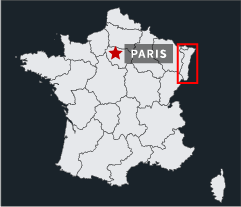
Blending French and German wine culture, this small region is known for its drier, earthier white wines that are more intense than expected. The noble grapes — Riesling, Pinot Gris, Gewurztraminer and Muscat — are the regions best known. Wines that are 50% noble grapes are labeled “Gentil” and present an extraordinary value.
Look for: Riesling, Gewurztraminer, Muscat
“This was the best week of my life. Our leaders were amazing and the schedule was perfect. The wine, lectures, wine, food, wine and field trips were wonderful…did I mention the wine? It was so much fun and educational.”
— Judith from Pitman, N.J. —
Suggested Reading List
“The Secret Life of the Seine,” by Mort Rosenblum
After losing his Paris apartment, Rosenblum, a born storyteller, takes to a houseboat moored on the Seine. The result is this entertaining exploration of the places and people he encounters during his discoveries along the river.
“French Wine: A History,” by Rod Phillips
French wine is the first synthetic history of wine in France: from Etruscan, Greek and Roman imports and the adoption of wine by beer-drinking Gauls to its present status within the global marketplace. Rod Phillips places the history of grape growing and winemaking in each of the country’s major regions within broad historical and cultural contexts.
“A Year in Provence,” by Peter Mayle
The original best-selling tale of an ex-pat settling down in Provence, told with warmth and a great deal of humor. It offers a wonderful inside look at the charms and quirks of the people and the countryside in the south of France.
“My Life in France,” by Julia Child
The touching and famous story of Julia Child in France, where she learned to cook and fell in love with French cuisine, all in her own words.
“Murder in the Marais,” by Cara Black
Literate and thrilling, with a strong sense of the geography and flavor of Paris, the first in a series of mysteries starring Aimee Ledoc shows off the French-American’s wit and wile. The series continues with Murder in Belleville (FRN562), Murder in the Sentier (FRN563) and many more.
“The Little Prince,” by Antoine de Saint Exupery
Antoine de Saint-Exupery's modern fable, enshrined in the hearts of many. First published in 1943, it tells of a naïve extraterrestrial who wanders from planet to planet, learning wisdom as he goes
“A Moveable Feast,” by Ernest Hemingway
A treasure for anyone interested in Parisian cafe society and its luminaries circa 1925. Hemingway includes sharp portraits of Gertrude Stein, Ezra Pound, F. Scott Fitzgerald, Ford Maddox Ford and others who idled on their way to greatness.
“Omaha Beach: D-Day, June 6, 1944” by Joseph Balkoski
In this unforgettable narrative of D-Day, Joseph Balkoski describes the minute-by-minute combat as it unfolded on Omaha Beach, allowing soldiers to speak for themselves as they recall their attempts to maneuver bombers through heavy cloud cover, the claustrophobic terror aboard transports, and the relentless fire that greeted them on the beach.
Useful French Phrases
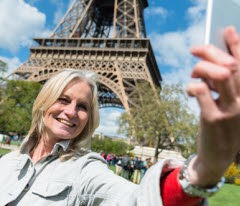
The French are proud of their history and culture, but even more so, of their language. Even though many people may speak English — especially in larger cities — it doesn’t mean they will forgo their native tongue. Greeting with a simple “Bonjour” can change the entirety of your interaction with a local. Learning some simple French phrases to use in conversation can go a long way and you may find that attitudes can shift when you at least try to speak their language. In addition to brushing up before traveling, there are a number of handy apps that are free to download on your phone that can help translate back and forth between English and dozens of other languages, including Google Translate for both Apple and Android devices.
- Bonjour — Hello
- S’il vous plaît — Please
- Oui/Non — Yes/No
- Parlez-vouz anglais? — Do you speak English?
- Je ne parle pas français — I don’t speak French
- Où est…? — Where is …?
- Où sont des toillets? — Where are the bathrooms?
- Combien ça coûte? — How much does it cost?
- Je ne comprends pas — I do not understand
- Pourriez-vous m’aider? — Can you help me?
- Merci beaucoup — Thank you very much
- Au revoir — Goodbye
- De rien — You’re welcome
“I loved climbing a salt mountain and seeing flamingoes. I walked where Van Gogh walked, and got a view of France I hadn't imagined. I didn't know about the white horses of the Camargue, and I didn't know what the Camargue was. It was all new, and it was fun.”
— Judith from Pitman, N.J. —




